
March 13, 2015
"For a guy who never made it big on radio," famed vaudeville comedian Milton Berle once jokingly remarked, "I was always on." Indeed, Berle starred in a slew of different programs under various formats over a thirteen-year span on radio, but it would take television's The Texaco Star Theater to make "Uncle Miltie" a household word. John Dunning succinctly sums it up when describes the popular comedian as "radio's best-known failure."
Milton's first foray into radio was The Gillette Original Community Sing, which ran on CBS from September 6, 1936 to August 29, 1937 as a Sunday night comedy-variety program. It was here than Berle demonstrated his patented "machine gun comedy" shtick, a style very similar to that of Bob Hope's but with a heavier emphasis on slapstick. (Both Berle and Hope have both acknowledged that they patterned their stage personas after Ted Healey, a sadly neglected comic who - for better or worse - was responsible for unleashing The Three Stooges on an unsuspecting world.) Berle recalled in his autobiography that the program's theme song (which he sang in the show's opening) was "Let's All Sing Like the Birdies Sing," which would require the audience to respond "Tweet, tweet, tweet, tweet, tweet!"
Milton later went on to host NBC's Stop Me If You've Heard This One in the fall of 1939 - a comedy panel show in which its members would attempt to finish the jokes sent in by the show's listening audience. He then resurfaced in 1941 for Three Ring Time, a comedy-variety program for Ballantine Ale that ran for a season on both the Mutual and Blue networks. Though the program received favorable critical buzz, it turned into a complete bust - much of it due to the internecine squabbling between Berle and co-star Charles Laughton. Milton tried radio three more times as a headliner: a brief self-titled series over CBS in 1943 for Campbell Soups; a 1944-45 "half-hour of slapstick" for Blue/CBS called Let Yourself Go (sponsored by Eversharp Razors); and a summer series over CBS in 1946, Kiss and Make Up, a gimmick program in which "judge" Berle presided over a mock court. (This turkey was created by writer-producer Cy Howard, later responsible for My Friend Irma and Life With Luigi.)
1947 found Berle seriously wanting to succeed in radio, so much so that he canceled several lucrative nightclub appearances that would have netted him $25,000 a week in order to break his radio jinx with Philip Morris' The Milton Berle Show, a Tuesday NBC program beginning March 11, 1947. Though the show barely made a dent in the ratings - its Hooper was a dismal 11.6 - it's probably Berle's best radio work.
The Milton Berle Show took a weekly satirical look at prominent pop-culture phenomena; one week it might be "a salute to relaxation," the next "a salute to high finance." Its format rarely deviated from week to week; after his monologue, Milton would interview a few individuals with some connection to the show's topic, more than likely members of his supporting cast, like Jack Albertson (pre-"Chico and the Man"), Ed Begley, and Arthur Q. Bryan. Next, he would conduct a hilarious interview with "expert" Al Kelly, a comedian/second banana whose specialty was "double-talk" routines. Announcer Frank Gallop would then introduce with a ringing bell the weekly "forum" (similar to Fred Allen's "Allen's Alley"), in which questions would be taken from "members" of the audience. Among the participants were Arnold Stang, playing a quarrelsome character always out to pick an argument with Berle, and Pert Kelton, who invariably introduced herself as "Tallulah Feeney, I'm a homemaker." The show would then conclude with a segment entitled "At Home With the Berle's," in which Milton, his wife (Mary Shipp), and his bratty son (Stang) would be featured in a sketch again related to that week's topic.
The Milton Berle Show was a very underrated program which benefited tremendously from both a fine supporting cast and well-written scripts from veteran scribes Nat Hiken (a former writer for Fred Allen who later created the TV classics The Phil Silvers Show and Car 54, Where are You?) and Aaron Ruben (The Andy Griffith Show, Gomer Pyle, USMC). Announcer Frank Gallop was the perfect foil for Berle (Berle: "Mr. Gallop, did you hear that? I just got four laughs in a row." Gallop: "Yes, they're all in the row your mother is in."), and vocalist Dick Forney and orchestra leader Ray Bloch found themselves the frequent target of Milton's barbs. But what ultimately made the show click was Berle himself, his boorish stage persona (described by Gerald Nachman as "the manic comic who won't shut up until you laugh") and self-deprecating manner blending seamlessly with Hiken and Ruben's broadly-written satire. Known to many in the business as "The Thief of Bad Gags," Milton frequently used this reputation to his advantage; on a September 16, 1947 broadcast he quips: "Tonight, Bob Hope's coming back on the air and why, in a couple of weeks, I'll have more jokes than I can stea...handle!" Berle demonstrated with this series - though admittedly, the radio audience appeared to have a dissenting opinion - that he didn't need his trademark visual gags and slapstick to create a rapport with listeners.
Milton's first foray into radio was The Gillette Original Community Sing, which ran on CBS from September 6, 1936 to August 29, 1937 as a Sunday night comedy-variety program. It was here than Berle demonstrated his patented "machine gun comedy" shtick, a style very similar to that of Bob Hope's but with a heavier emphasis on slapstick. (Both Berle and Hope have both acknowledged that they patterned their stage personas after Ted Healey, a sadly neglected comic who - for better or worse - was responsible for unleashing The Three Stooges on an unsuspecting world.) Berle recalled in his autobiography that the program's theme song (which he sang in the show's opening) was "Let's All Sing Like the Birdies Sing," which would require the audience to respond "Tweet, tweet, tweet, tweet, tweet!"
Milton later went on to host NBC's Stop Me If You've Heard This One in the fall of 1939 - a comedy panel show in which its members would attempt to finish the jokes sent in by the show's listening audience. He then resurfaced in 1941 for Three Ring Time, a comedy-variety program for Ballantine Ale that ran for a season on both the Mutual and Blue networks. Though the program received favorable critical buzz, it turned into a complete bust - much of it due to the internecine squabbling between Berle and co-star Charles Laughton. Milton tried radio three more times as a headliner: a brief self-titled series over CBS in 1943 for Campbell Soups; a 1944-45 "half-hour of slapstick" for Blue/CBS called Let Yourself Go (sponsored by Eversharp Razors); and a summer series over CBS in 1946, Kiss and Make Up, a gimmick program in which "judge" Berle presided over a mock court. (This turkey was created by writer-producer Cy Howard, later responsible for My Friend Irma and Life With Luigi.)
1947 found Berle seriously wanting to succeed in radio, so much so that he canceled several lucrative nightclub appearances that would have netted him $25,000 a week in order to break his radio jinx with Philip Morris' The Milton Berle Show, a Tuesday NBC program beginning March 11, 1947. Though the show barely made a dent in the ratings - its Hooper was a dismal 11.6 - it's probably Berle's best radio work.
The Milton Berle Show took a weekly satirical look at prominent pop-culture phenomena; one week it might be "a salute to relaxation," the next "a salute to high finance." Its format rarely deviated from week to week; after his monologue, Milton would interview a few individuals with some connection to the show's topic, more than likely members of his supporting cast, like Jack Albertson (pre-"Chico and the Man"), Ed Begley, and Arthur Q. Bryan. Next, he would conduct a hilarious interview with "expert" Al Kelly, a comedian/second banana whose specialty was "double-talk" routines. Announcer Frank Gallop would then introduce with a ringing bell the weekly "forum" (similar to Fred Allen's "Allen's Alley"), in which questions would be taken from "members" of the audience. Among the participants were Arnold Stang, playing a quarrelsome character always out to pick an argument with Berle, and Pert Kelton, who invariably introduced herself as "Tallulah Feeney, I'm a homemaker." The show would then conclude with a segment entitled "At Home With the Berle's," in which Milton, his wife (Mary Shipp), and his bratty son (Stang) would be featured in a sketch again related to that week's topic.
The Milton Berle Show was a very underrated program which benefited tremendously from both a fine supporting cast and well-written scripts from veteran scribes Nat Hiken (a former writer for Fred Allen who later created the TV classics The Phil Silvers Show and Car 54, Where are You?) and Aaron Ruben (The Andy Griffith Show, Gomer Pyle, USMC). Announcer Frank Gallop was the perfect foil for Berle (Berle: "Mr. Gallop, did you hear that? I just got four laughs in a row." Gallop: "Yes, they're all in the row your mother is in."), and vocalist Dick Forney and orchestra leader Ray Bloch found themselves the frequent target of Milton's barbs. But what ultimately made the show click was Berle himself, his boorish stage persona (described by Gerald Nachman as "the manic comic who won't shut up until you laugh") and self-deprecating manner blending seamlessly with Hiken and Ruben's broadly-written satire. Known to many in the business as "The Thief of Bad Gags," Milton frequently used this reputation to his advantage; on a September 16, 1947 broadcast he quips: "Tonight, Bob Hope's coming back on the air and why, in a couple of weeks, I'll have more jokes than I can stea...handle!" Berle demonstrated with this series - though admittedly, the radio audience appeared to have a dissenting opinion - that he didn't need his trademark visual gags and slapstick to create a rapport with listeners.
The Milton Berle Show was axed by NBC on April 13, 1948, and Milton moved to ABC in September with a radio version of The Texaco Star Theater, bringing along with him Stang, Kelton, Gallop, and writers Hiken and Ruben, who were joined by two then-unknown scriptwriting brothers named Danny and Neil Simon. In later years, Milton remembered it as "the best radio show I ever did...a hell of a funny variety show." It, too, was doomed to last only one season - but by that time, it scarcely mattered. Milton was already wowing audiences with the TV version on NBC, a program that became the stuff of legend - and bestowed upon him the kingly title of "Mr. Television."
8 hours - $11.99 Download / $23.98 Audio CDs
Special 50% discount Offer
featuring a set from the Detectives category


A precedent-shattering radio landmark that became a national institution -- its influence is with us yet. And now Radio Archives is proud to take you back to the very beginning, with an exciting collection of broadcasts from the very first season of Jack Webb’s police procedural classic “Dragnet.”
Programs included in this collection are from first six months’ of the program’s run, beginning with the second broadcast of the series. Although Walter Schumann’s famous theme music doesn’t appear until Episode 3, the essential feel of the series is there from the very beginning of the run: the quiet byplay between Friday and his partner Ben Romero, expertly played by radio veteran Barton Yarborough, the meticulous documentation of the unfolding case, and the careful pacing of each episode as it builds slowly but steadily to a climax. The supporting players are drawn from the ranks of top radio talent, including such performers as Frank Lovejoy, Parley Baer, Hans Conried, and Raymond Burr, and the production values -- layering sound upon sound -- are of astonishing proficiency.
It’s a collection that shows you just how powerful, just how creative, and just how fascinating American radio drama could be when it found itself in the hands and mind of a master.
Specially priced until March 26. 10 hours - $7.49 Download / $14.99 Audio CDs
Special 50% discount Offer
featuring a set from the Variety category


“Wake Up, America! It’s Time to Stump the Experts!”
Dan Golenpaul was a man with a mission. Having spent most of the 1930s trying to talk radio network executives into raising the level of broadcast entertainment above the mentality of the average twelve-year-old child, Golenpaul had lately set his sites on a venerable radio feature: the quiz show. What if, he thought, the tables were turned? What if it was the contestants asking the questions, rather than the hosts? Who would feel foolish then? From this simple notion came a brainstorm that would soon lead to the creation of “Information Please,” one of the most popular, award-winning, and consistently entertaining programs in radio history.
Clifton Fadiman had begun his literary career working for the publishing firm of Simon and Schuster, where he gradually rose to the position of Editor in Chief, then later moving to Harold Ross’ New Yorker magazine. His tart New England accent combined with a wide knowledge of many subjects and a quick and biting wit, had already earned him a reputation as a welcome guest on many discussion programs. Franklin P. Adams, known primarily as “F.P.A.,” the byline he used as the author of “The Conning Tower,” his popular column in the New York Post, was well known as a member of the Algonquin Round Table, a group of literary and theatrical wits that regularly gathered for lunch in New York’s fashionable Algonquin Hotel. Possessing an expert knowledge of Shakespeare and popular songs, as well as friendly contacts with many of the witty people who would serve on the panel of “Information Please” in the years to come. Armed with Fadiman, a team of experts, $100.00 in prize money, and NBC staff announcer Milton Cross, “Information Please” hit the airwaves at 8:30 PM on Tuesday, May 17, 1938 over NBC’s Blue Network.
The twenty programs in this collection come from the first few months of “Information Please’s” twelve-year run and demonstrate that, with only a few minor changes in format, the program from the start displayed all of the elements that would eventually lead to its long-running success. An early attempt to literally have the audience quiz the experts by having those who submitted the questions actually ask them, live and on the air, is soon dropped in favor of the more erudite (and comprehensible) Fadiman relating the questions. We also have the chance to hear the debuts of two other experts who would soon become series regulars: New York Times sportswriter and columnist John Kieran and piano virtuoso and composer Oscar Levant. Kieran, with a soft Bronx accent that belied a broad knowledge of sports history, nature, and ornithology, and Levant, with his musical background, caustic wit, and knowledge of movies and entertainment, would add their own personal touches to “Information Please” in the years to come - years which would eventually find the series rated among the top ten programs on radio, with a regular listening audience of over nine million people.
So, as Milton Cross would say, wake up, America! It’s time to stump the experts!
Specially priced until March 26. 10 hours - $7.49 Download / $14.99 Audio CDs
16" Transcription Discs
Broadway Records Auction company is selling thousands of our transcription discs. These discs will be sold on a first come basis for the minimum bid. Browse through hundreds of UNSOLD transcription discs from the recent Broadway Records disc auction. Sold by Broadway Records.
With the release of this week’s Spider audiobook, The Serpent of Destruction, we reach another milestone––Will Murray Pulp Classics #75! We began this imprint with a Spider audiobook back in the Fall of 2011, so it only made sense to schedule another one for this occasion. It’s been a wonderful ride thus far, and we here at Radio Archives are pleased to see that support for The Spider and our other pulp projects continues as strongly as ever. Assuming this continues at this pace, early next year we’ll hit WMPC #100! None of it would have been possible without our loyal audience. So, thank you from the bottom of our pulpy hearts. And always remember we invite your suggestions for future projects.... —Will Murray
Will Murray's Pulp Classics #75
Read by Nick Santa Maria. Liner Notes by Will Murray
“It’s smart to be dopey!”
This was the slogan dancing on the laughing lips of the so-called Smart Set in this hard-hitting Spider novel. According to the slang of 1934, “dope” stood for heroin. And a criminal genius calling himself the Bloody Serpent was its chief pusher.
With the Repeal of Prohibition, alcohol is now legal. The speakeasies have reopened as legitimate saloons. Bootleggers and their illegal brewers have been thrown out of business. America is celebrating—but also looking for a new illicit kick.
Amid this historic upheaval, the Bloody Serpent senses a fresh opportunity. Organizing the New York underworld under his wicked banner, he begins a systematic campaign to undermine law and order—the better to push his narcotic wares on the city’s gullible uppercrust. No wonder they called him The Serpent of Destruction!
First, Commissioner Kirkpatrick is framed and disgraced. Then Nita van Sloan is kidnapped with the cruel intention of turning her into pathetic dope addict. Criminals, once cowing in terror of the Spider’s awesome wrath, now laughed at his name, their old arachnophobia gone.
That was when the Spider decided to armor himself with a new array of weapons—deadly devices so terrible that they would reinflict the dread that the Master of Men had built up in the criminal underworld—and vowing to wage “War to the hilt!”
It’s war of attrition as the Spider sets out to slay the henchmen of the Bloody Serpent, and Manhattan is rocked to its foundations by a new kind of gang war—the Spider versus everyone!
Nick Santa Maria reads this riveting Spider thriller.
5 hours - $9.99 Download / $19.98 Audio CDs
New Will Murray's Pulp Classics eBooks
The best of timeless Pulp now available as cutting edge eBooks! Will Murray's Pulp Classics brings the greatest heroes, awesome action, and two fisted thrills to your eReader! Presenting Pulp Icons such as the Spider, G-8 and His Battle Aces, Operator #5 as well as wonderfully obscure characters like the Octopus and Captain Satan. Will Murray's Pulp Classics brings you the best of yesterday's Pulp today!
G-8 and His Battle Aces #30 The Patrol of the Dead
Deep in the forests of Bocheland lurked a horror that was not Death — but a living doom that robbed the soul and turned men into bloodthirsty beasts! What ghastly genius of forgotten centuries had now returned to paint the sky and earth in blood? G-8 held half the secret within his whirling brain, and meant to learn the rest, knowing too well that his only reward would be Death or living madness! G-8 and his Battle Aces rode the nostalgia boom ten years after World War I ended. These high-flying exploits were tall tales of a World War that might have been, featuring monster bats, German zombies, wolf-men, harpies, Martians, and even tentacled floating monsters. Most of these monstrosities were the work of Germany’s seemingly endless supply of mad scientists, chief of whom was G-8’s recurring Nemesis, Herr Doktor Krueger. G-8 battled Germany’s Halloween shock troops for over a decade, not ceasing until the magazine folded in the middle of World War II. G-8 and his Battle Aces return in vintage pulp tales, reissued for today’s readers in electronic format. $2.99.
Deep in the forests of Bocheland lurked a horror that was not Death — but a living doom that robbed the soul and turned men into bloodthirsty beasts! What ghastly genius of forgotten centuries had now returned to paint the sky and earth in blood? G-8 held half the secret within his whirling brain, and meant to learn the rest, knowing too well that his only reward would be Death or living madness! G-8 and his Battle Aces rode the nostalgia boom ten years after World War I ended. These high-flying exploits were tall tales of a World War that might have been, featuring monster bats, German zombies, wolf-men, harpies, Martians, and even tentacled floating monsters. Most of these monstrosities were the work of Germany’s seemingly endless supply of mad scientists, chief of whom was G-8’s recurring Nemesis, Herr Doktor Krueger. G-8 battled Germany’s Halloween shock troops for over a decade, not ceasing until the magazine folded in the middle of World War II. G-8 and his Battle Aces return in vintage pulp tales, reissued for today’s readers in electronic format. $2.99.
Dare-Devil Aces #22 December 1933 The Invisible Patrol
The Invisible Patrol — The Red Falcon by Robert J. Hogan. The Falcon follows a phantom enemy deep into dead man’s skies. Dare-Devil Aces was another of the many pulps that rode the wave of popularity of World War I aviation tales in the decade after the conflict. It made its debut in February 1932 and lasted for an astounding 135 issues. It finally closed after World War II ended, with the November 1946 issue. During its run, it presented a wide assortment of high-flying aerial series, including The Red Falcon, The Vanished Legion, The Three Mosquitoes, Molloy and McNamara, The Black Sheep of Belogue, The Mongol Ace, Chinese Brady, Captain Babyface, Smoke Wade and others. Strap on your flying helmet, toss that scarf about your neck and get ready for some soaring action in the skies over France and Germany during the Great War. Dare-Devil Aces return in vintage pulp tales, reissued for today’s readers in electronic format. $2.99.
The Invisible Patrol — The Red Falcon by Robert J. Hogan. The Falcon follows a phantom enemy deep into dead man’s skies. Dare-Devil Aces was another of the many pulps that rode the wave of popularity of World War I aviation tales in the decade after the conflict. It made its debut in February 1932 and lasted for an astounding 135 issues. It finally closed after World War II ended, with the November 1946 issue. During its run, it presented a wide assortment of high-flying aerial series, including The Red Falcon, The Vanished Legion, The Three Mosquitoes, Molloy and McNamara, The Black Sheep of Belogue, The Mongol Ace, Chinese Brady, Captain Babyface, Smoke Wade and others. Strap on your flying helmet, toss that scarf about your neck and get ready for some soaring action in the skies over France and Germany during the Great War. Dare-Devil Aces return in vintage pulp tales, reissued for today’s readers in electronic format. $2.99.
All eBooks produced by Radio Archives are available in ePub, Mobi, and PDF formats for the ultimate in compatibility. When you upgrade to a new eReader, you can transfer your eBooks to your new device without the need to purchase anything new.

Two Weird Tales reprints on sale!
For the next two weeks both of these modern Weird Tales magazines are being discounted by 50%.
 Weird Tales #293 Winter 1988/1989
Weird Tales #293 Winter 1988/1989Special Avram Davidson Issue. The Winter 1988/1989 issue of Weird Tales showcases the work of Featured Author Avram Davidson and Featured Artist Hank Janus. Also includes work by Carl Jacobi, Robert Sheckley, Ian Watson, Keith Roberts, and many more. 148 pages. Specially priced until March 26 - $4.97
Weird Tales #294 Fall 1989
Special Karl Edward Wagner Issue! The Fall 1989 issue of Weird Tales showcases Featured Author Karl Edward Wagner (who contributes a major Kane novella and an interview) and Featured Artist J.K. Potter (who contributes all the artwork). Also includes work by Jonathan Carroll, Nina Kiriki Hoffman, Brian Lumley, and more. 148 pages. Specially priced until March 26 - $4.97
Special Karl Edward Wagner Issue! The Fall 1989 issue of Weird Tales showcases Featured Author Karl Edward Wagner (who contributes a major Kane novella and an interview) and Featured Artist J.K. Potter (who contributes all the artwork). Also includes work by Jonathan Carroll, Nina Kiriki Hoffman, Brian Lumley, and more. 148 pages. Specially priced until March 26 - $4.97
by Will Murray and Lester Dent, writing as Kenneth Robeson, cover illustration by Joe DeVito
When William Harper Littlejohn unearths a shadowy figure transfixed in ice, the renowned archeologist understands that he has made the most momentous discovery of his brilliant career. For inscribed over the frozen form is this chilling warning:
“IF I STILL LIVED, MANKIND WOULD TREMBLE!”
Who is this monster? Why does his name strike terror into the hearts of brave men? Can even Doc Savage control him once he breaks free of his icy tomb?
From the Gobi Desert to war-torn Free China, the Man of Bronze and his fighting crew battle a threat so terrifying that it could change the course of human history…. Softcover $24.95
Who knows what evil lurks in the hearts of men? The Shadow knows! Lamont Cranston takes center stage in two thrilling mysteries by Walter B. Gibson writing as “Maxwell Grant.” First, the peace and quiet of a countryside give way to criminal warfare as The Shadow stalks the hidden mastermind of the “Murder House.” Then, in “Death in the Crystal,” Margo Lane’s visit to the Tibetan fakir Mahatma Xanadu sets The Shadow on the trail of strange crime that leads to a criminal mastermind discovering The Shadow’s secret identity as Lamont Cranston. BONUS: a classic Shadow adventure from the Golden Age of Radio! This instant collector’s item showcases both classic color pulp covers by George Rozen and Modest Stein and the original interior illustrations by Tom Lovell and Paul Orban, with original commentary by popular culture historians Will Murray and Anthony Tollin. Double Novel Reprint $14.95
The greatest superhero of the pulp era returns in two-fisted thrillers by Lawrence Donovan and Lester Dent writing as "Kenneth Robeson." First, Doc Savage is framed by a bronze lookalike as nightmarish reptilian creatures fill the air and Earth is threatened with environmental disaster in "Mad Eyes." Then, Patricia Savage blunders into a death trap after she intercepts a message for Doc, and the only clue to her disappearance suggests "Death is a Round Black Spot." This deluxe pulp reprint leads off with the classic color pulp cover by Robert G. Harris, and also features the original interior illustrations by Paul Orban and historical commentary by Will Murray, author of fifteen Doc Savage novels. Double Novel Reprint $14.95
Doc Savage, Volume 80, James Bama cover
The greatest superhero of the pulp era returns in two-fisted thrillers by Lawrence Donovan and Lester Dent writing as "Kenneth Robeson." First, Doc Savage is framed by a bronze lookalike as nightmarish reptilian creatures fill the air and Earth is threatened with environmental disaster in "Mad Eyes." Then, Patricia Savage blunders into a death trap after she intercepts a message for Doc, and the only clue to her disappearance suggests "Death is a Round Black Spot." This deluxe pulp reprint leads off with a knockout cover painting by legendary illustrator James Bama and also features both color pulp covers, original interior illustrations by Paul Orban and historical commentary by Will Murray, author of fifteen Doc Savage novels. Double Novel Reprint $14.95
The greatest superhero of the pulp era returns in two-fisted thrillers by Lawrence Donovan and Lester Dent writing as "Kenneth Robeson." First, Doc Savage is framed by a bronze lookalike as nightmarish reptilian creatures fill the air and Earth is threatened with environmental disaster in "Mad Eyes." Then, Patricia Savage blunders into a death trap after she intercepts a message for Doc, and the only clue to her disappearance suggests "Death is a Round Black Spot." This deluxe pulp reprint leads off with a knockout cover painting by legendary illustrator James Bama and also features both color pulp covers, original interior illustrations by Paul Orban and historical commentary by Will Murray, author of fifteen Doc Savage novels. Double Novel Reprint $14.95
Sanctum Books completes its reprinting of the original 1936-37 pulp series by DOC SAVAGE’s Lawrence Donovan writing as “Clifford Goodrich” that inspired BATMAN’s first supporting character! First, an ingeniously concealed map holds the answer Police Commissioner James Gordon needs to stop flower-festooned serial slayings in “The Death Roses.” Then, The Whisperer invades China Hill to smash the weird “Murder Brotherhood.” Finally, it’s up to The Whisperer to discover why a philosophical Asian was “Afraid to Die” in a novelette by Alan Hathway from the back pages of THE SHADOW MAGAZINE! BONUS: Norgil the Magician takes the stage in a magical mystery by The Shadow’s Maxwell Grant, plus a classic Whisperer graphic story from the Golden Age of Comics! This instant collector’s item showcases the original color pulp covers by John Newton Howitt and Tom Lovell, the classic interior illustrations by Paul Orban and historical commentary by Will Murray and Anthony Tollin. Double Novel Reprint $14.95




The last few Spider and Terror Tales Replicas are reduced in price and
are in the Bargain Basement along with Pulp Reprints, and a large selection of OTR LPs.
Comments From Our Customers!
Ernst H. Spellmeyer writes:
Father Knows Best Volume 4, Have Gun, Will Travel Volume 5 and Dragnet Volume 8 arrived in this afternoon's mail. Thank you for your quick service. I was anxious to listen to Father Knows Best. The audio quality is just wonderful. The show brought back many happy memories from my younger days. I hope your business continues to succeed.
Father Knows Best Volume 4, Have Gun, Will Travel Volume 5 and Dragnet Volume 8 arrived in this afternoon's mail. Thank you for your quick service. I was anxious to listen to Father Knows Best. The audio quality is just wonderful. The show brought back many happy memories from my younger days. I hope your business continues to succeed.
A satisfied customers writes:
Captain Future #4 is one of the more focused entries in the series. 1940s pulp about the unnatural use of an illegal drug to circumvent the aging process. Could not stop thinking about Botox, silicon and duck mouth. This is no boring morality tale. Proton pistols blaze, comets get chased, and a pretty girl gets rescued. The Future Men at some of their best.
If you'd like to share a comment with us or if you have a question or a suggestion send an email to Service@RadioArchives.com. We'd love to hear from you!
3 ways to order.
1. Website RadioArchives.com
2. Phone 800-886-0551
3. Email Reply to this email with what you want to order. Payment information will be sent to you.
Whichever method you prefer, order by 7:30pm EDT and your order is mailed today!


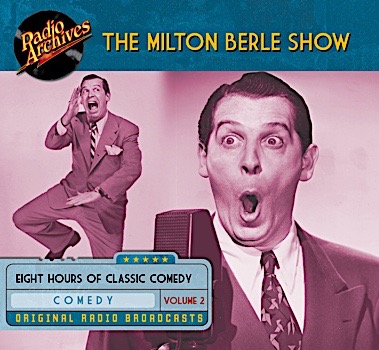



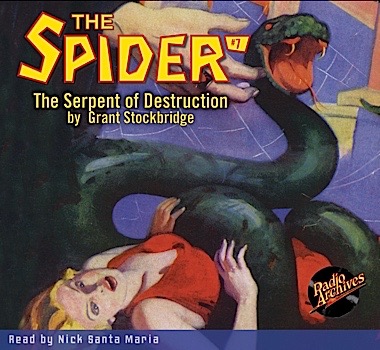


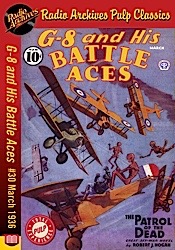




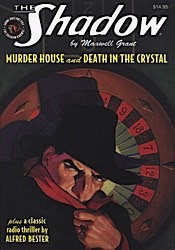
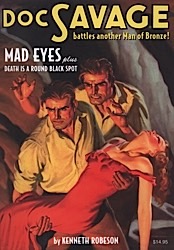
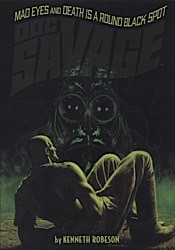
















No comments:
Post a Comment